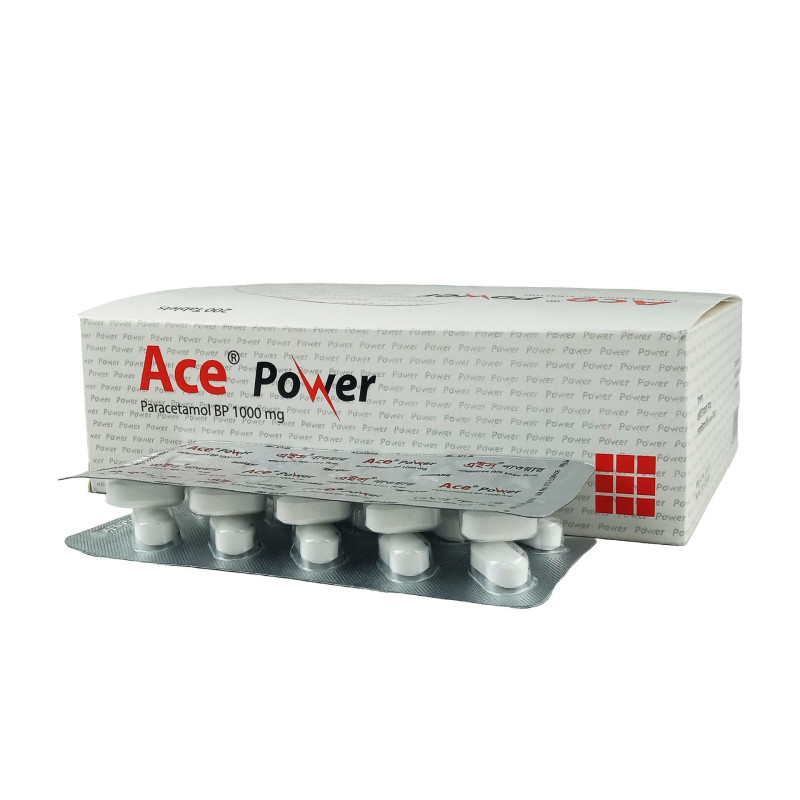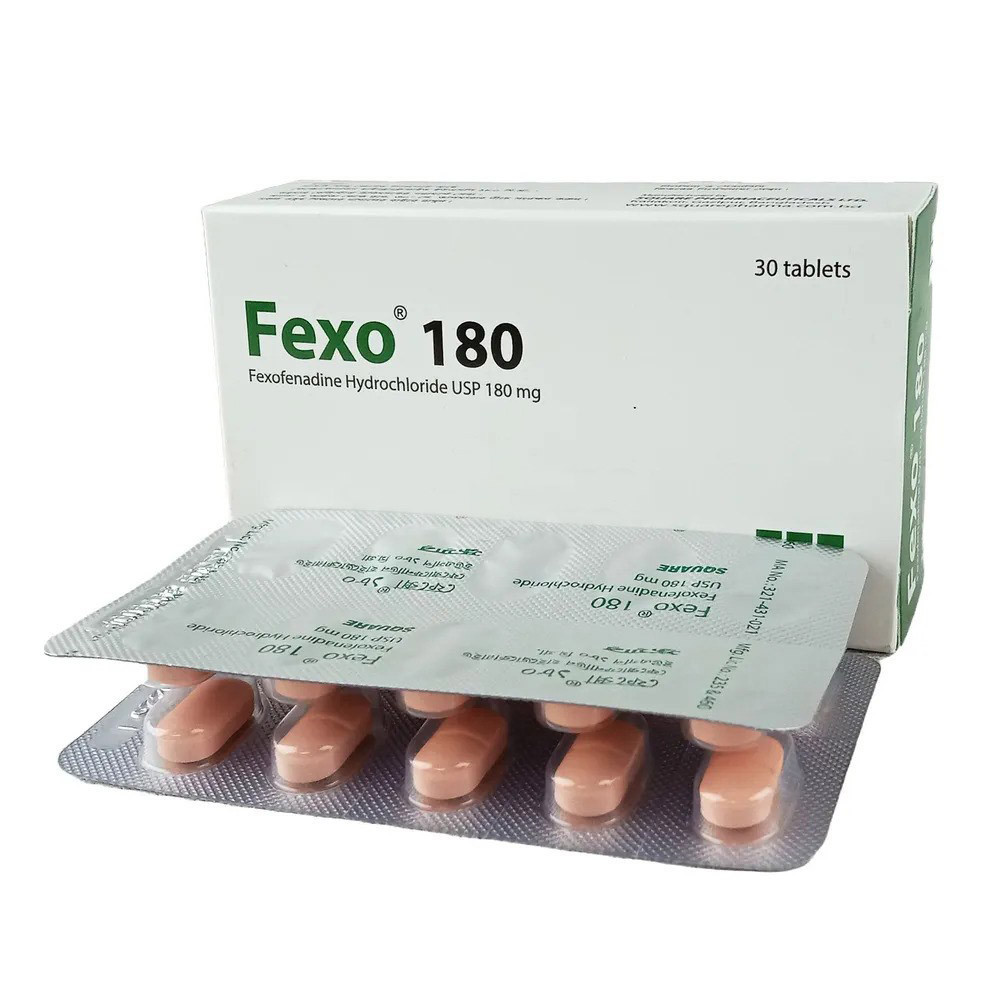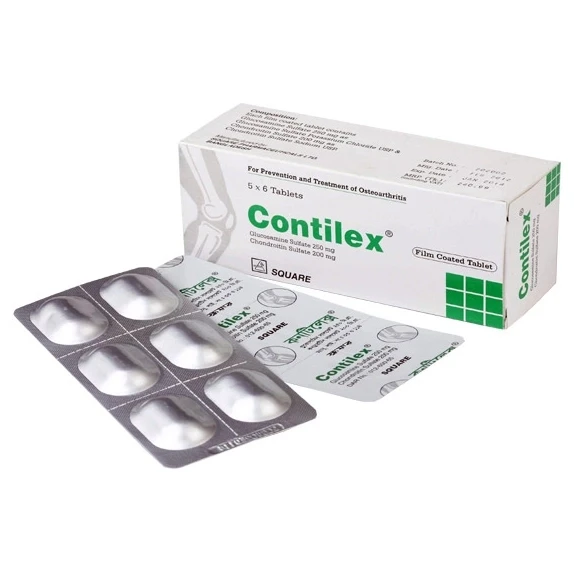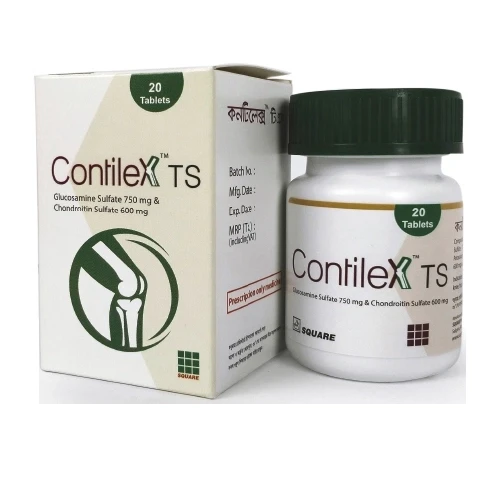

Ace Power Tablet, 1000 Mg(Paracetamol)
Inhouse product
-
৳11.40
৳12.00 -
৳42.75
৳45.00 -
৳16.63
৳17.50 -
৳2.14
৳2.25
Reviews & Ratings
Indications
Ace Power is indicated for fever, common cold
and influenza, headache, toothache, earache, bodyache, myalgia, neuralgia,
dysmenorrhoea, sprains, colic pain, back pain, post-operative pain, postpartum
pain, inflammatory pain and post vaccination pain in children. It is also
indicated for rheumatic & osteoarthritic pain and stiffness of joints.
* রেজিস্টার্ড চিকিৎসকের পরামর্শ মোতাবেক ঔষধ সেবন করুন'
Pharmacology
Paracetamol exhibits analgesic action by
peripheral blockage of pain impulse generation. It produces antipyresis by
inhibiting the hypothalamic heat-regulating centre. Its weak anti-inflammatory
activity is related to inhibition of prostaglandin synthesis in the CNS.
Paracetamol (Acetaminophen) is thought to act primarily in the CNS, increasing
the pain threshold by inhibiting both isoforms of cyclooxygenase, COX-1, COX-2,
and COX-3 enzymes involved in prostaglandin (PG) synthesis. Unlike NSAIDs, acetaminophen
does not inhibit cyclooxygenase in peripheral tissues and, thus, has no
peripheral anti-inflammatory affects. While aspirin acts as an irreversible
inhibitor of COX and directly blocks the enzyme's active site, studies have
found that acetaminophen indirectly blocks COX, and that this blockade is
ineffective in the presence of peroxides. This might explain why acetaminophen
is effective in the central nervous system and in endothelial cells but not in
platelets and immune cells which have high levels of peroxides. Studies also
report data suggesting that acetaminophen selectively blocks a variant of the
COX enzyme that is different from the known variants COX-1 and COX-2. This
enzyme is now referred to as COX-3. Its exact mechanism of action is still
poorly understood, but future research may provide further insight into how it
works. The antipyretic properties of acetaminophen are likely due to direct
effects on the heat-regulating centres of the hypothalamus resulting in
peripheral vasodilation, sweating and hence heat
Dosage &
Administration
Tablet:
§ Adult: 1-2 tablets every 4 to 6 hours up to a
maximum of 4 gm (8 tablets) daily.
§ Children (6-12 years): ½ to 1 tablet 3 to
4 times daily. For long term treatment it is wise not to exceed the dose beyond
2.6 gm/day.
Extended Release
Tablet:
§ Adults & Children over 12 years: Two
tablets, swallowed whole, every 6 to 8 hours (maximum of 6 tablets in any 24
hours).The tablet must not be crushed.
Syrup/Suspension:
§ Children under 3 months: 10 mg/kg body weight
(reduce to 5 mg/kg if jaundiced) 3 to 4 times daily.
§ 3 months to below 1 year: ½ to 1 teaspoonful 3
to 4 times daily.
§ 1-5 years: 1 -2 teaspoonful 3 to 4 times
daily.
§ 6-12 years: 2-A teaspoonful 3 to 4 times
daily.
§ Adults: 4-8 teaspoonful 3 to 4 times daily.
Suppository:
§ Children 3-12 months: 60-120 mg,4 times daily.
§ Children 1-5 years: 125-250 mg 4 times daily.
§ Children 6-12 years: 250-500 mg 4 times daily.
§ Adults & children over 12 years: 0.5-1 gm
4 times daily.
Paediatric Drop:
§ Children Upto 3 months: 0.5 ml (40 mg)
§ 4 to 11 months: 1.0 ml (80 mg)
§ 7 to 2 years: 1.5 ml (120 mg). Do not exceed
more than 5 dose daily for a maximum of 5 days.
Tablet with actizorb
technology: It dissolves up to
five times faster than standard Paracetamol tablets. It is a fast acting and
safe analgesic with marked antipyretic property. It is specially suitable for
patients who, for any reason, can not tolerate aspirin or other analgesics.
§ Adults and children (aged 12 years and over):
Take 1 to 2 Tablets every four to six hours as needed. Do not take more than 8
caplets in 24 hours.
§ Children (7 to 11 years): Take ½-1 Tablet
every four to six hours as needed. Do not take more than 4 caplets in 24 hours.
Not recommended in children under 7 years.
IV Infusion:
§ Adults and adolescents weighing 50 kg and
over: the recommended dosage of Paracetamol IV is 1000 mg every 6 hours or 650
mg every 4 hours, with a maximum single dose of Paracetamol IV of 1000 mg, a
minimum dosing interval of 4 hours, and a maximum daily dose of Paracetamol of
4000 mg per day.
§ Adults and adolescents weighing under 50 kg:
the recommended dosage of Paracetamol IV is 15 mg/kg every 6 hours or 12.5
mg/kg every 4 hours, with a maximum single dose of Paracetamol IV of 15 mg/kg,
a minimum dosing interval of 4 hours, and a maximum daily dose of Paracetamol
of 75 mg/kg per day.
§ Children >2 to 12 years of age: the
recommended dosage of Paracetamol IV is 15 mg/kg every 6 hours or 12.5 mg/kg
every 4 hours, with a maximum single dose of Paracetamol IV of 15 mg/kg, a
minimum dosing interval of 4 hours, and a maximum daily dose of Paracetamol of
75 mg/kg per day.
* রেজিস্টার্ড চিকিৎসকের পরামর্শ মোতাবেক ঔষধ সেবন করুন'
Interaction
Patients who have taken barbiturates,
tricyclic antidepressants and alcohol may show diminished ability to metabolise
large doses of Ace Power. Alcohol can increase the hepatotoxicity of Ace Power
overdosage. Chronic ingestion of anticonvulsants or oral steroid contraceptives
induce liver enzymes and may prevent attainment of therapeutic Ace Power levels
by increasing first-pass metabolism or clearance.
Contraindications
It is contraindicated in known
hypersensitivity to Paracetamol.
Side Effects
Side effects of Ace Power are usually mild,
though haematological reactions including thrombocytopenia, leucopenia,
pancytopenia, neutropenia, and agranulocytosis have been reported.
Pancreatitis, skin rashes, and other allergic reactions occur occasionally.
Pregnancy &
Lactation
Epidemiological studies in human pregnancy
have shown no ill effects due to Paracetamol used in the recommended dosage,
but patients should follow the advice of their doctor regarding its use.
Paracetamol is excreted in breast milk, but not in a clinically significant
amount. Available published data do not contraindicate breast feeding.
Precautions &
Warnings
Care is advised in the administration of Ace
Power to patients with severe renal or severe hepatic impairment. The hazard of
overdose is greater in those with non-cirrhotic alcoholic liver disease. Do not
exceed the stated dose. Patients should be advised not to take other Ace
Power-containing products concurrently. Ace Power should only be used by the
patient for whom it is prescribed when clearly necessary.
Administration of Ace Power in doses higher than recommended may result in
hepatic injury, including the risk of severe hepatotoxicity and death. Do not
exceed the maximum recommended daily dose of Ace Power. Use caution when
administering Ace Power in patients with the following conditions: hepatic
impairment or active hepatic disease, alcoholism, chronic malnutrition, severe
hypovolemia (e.g., due to dehydration or blood loss), or severe renal
impairment (creatinine clearance < 30 ml/min). There were infrequent reports
of life-threatening anaphylaxis requiring emergent medical attention.
Discontinue Ace Power IV immediately if symptoms associated with allergy or
hypersensitivity occurs. Do not use Ace Power IV in patients with Ace Power
allergy.
Use in Special
Populations
Pediatric Use: The safety and effectiveness of Ace Power IV
for the treatment of acute pain and fever in pediatric patients ages 2 years
and older is supported by evidence from adequate and well-controlled studies of
Ace Power IV in adults.
Geriatric use: No overall differences in safety or
effectiveness were observed between these subjects and younger subjects, and
other reported clinical experience has not identified differences in responses
between the elderly and younger patients.
Patients with Hepatic
Impairment: Ace Power is
contraindicated in patients with severe hepatic impairment or severe active
liver disease and should be used with caution in patients with hepatic
impairment or active liver disease. A reduced total daily dose of Ace Power may
be warranted.
Patients with Renal
Impairment: In cases of severe
renal impairment (creatinine clearance < 30 ml/min), longer dosing intervals
and a reduced total daily dose of Ace Power may be warranted.
Overdose Effects
Liver damage is possible in adults who have
taken 10 g or more of Ace Power. Ingestion of 5 g or more of Ace Power may lead
to liver damage if the patient has following risk factors: If the patient is on
long term treatment with Carbamazepine, Phenobarbitone, Phenytoin, Primidone,
Rifampicin, St John’s Wort or other drugs that induce liver enzymes, or
regularly consumes Ethanol in excess of recommended amounts, or is likely to be
Glutathione deplete e.g. eating disorders, cystic fibrosis, HIV infection, starvation,
cachexia.
Symptoms: Symptoms of Ace Power overdose in the first
24 hours are pallor, nausea, vomiting, anorexia and abdominal pain. Liver
damage may become apparent 12 to 48 hours after ingestion. Abnormalities of
glucose metabolism and metabolic acidosis may occur. In severe poisoning,
hepatic failure may progress to encephalopathy, haemorrhage, hypoglycaemia,
cerebral oedema and death. Acute renal failure with acute tubular necrosis,
strongly suggested by loin pain, haematuria and proteinuria, may develop even
in the absence of severe liver damage. Cardiac arrhythmias and pancreatitis
have been reported. Immediate treatment is essential in the management of Ace
Power overdose. Treatment with activated charcoal should be considered if the
overdose has been taken within 1 hour. Plasma Ace Power concentration should be
measured at 4 hours or later after ingestion (earlier concentrations are
unreliable). Treatment with N-acetylcysteine may be used up to 24 hours after
ingestion of Ace Power. However, the maximum protective effect is obtained up
to 8 hours post-ingestion. The effectiveness of the antidote declines sharply
after this time. If required the patient should be given intravenous
N-acetylcysteine, in line with the established dosage schedule. If vomiting is
not a problem, oral Methionine may be a suitable alternative for remote areas,
outside hospital. Management of patients who present with serious hepatic
dysfunction beyond 24 hours from ingestion should be discussed with the NPIS or
a liver unit.
Therapeutic Class
Non opioid analgesics
Storage Conditions
Keep in a dry place away from light and heat.
Keep out of the reach of children.
Chemical Structure
|
Molecular Formula : |
C8H9NO2 |
|
Chemical Structure : |
|
Common Questions about Ace Power 1000 mg
Tablet
What is Ace Power 1000 mg Tablet?
Ace Power 1000 mg Tablet is a medication that performs its
action by obstructing the release of pain and fever chemical messengers.
What are the uses of Ace Power 1000 mg Tablet?
Ace Power 1000 mg Tablet is used for the treatment and
prevention of conditions and symptoms of diseases like Post immunization
pyrexia, menstrual cramps and fever.
What are the Side Effects of Ace Power 1000 mg
Tablet Ace Power 1000 mg Tablet?
Allergic reaction, gastric ulcers, fatigue, anemia, nausea and
vomiting are possible side effects.
What are the instructions for storage and
disposal Ace Power 1000 mg Tablet?
Ace Power 1000 mg Tablet should be stored at room temperature,
away from heat and direct light. Keep it away from the reach of children and
pets.
Should I use Ace Power 1000 mg Tablet empty
stomach, before food or after food?
If you take Ace Power 1000 mg Tablet with the food, the
reactions that took place in the body carry-outs in a much effective manner.
How long do I need to use Ace Power 1000 mg
Tablet before I see improvement in my conditions?
Ace Power 1000 mg Tablet should be consumed, until the complete
eradication of the disease. It is advised to use, till the time directed by
your doctor.
Is there any food or drink I need to avoid
while taking Ace Power 1000 mg Tablet?
You can follow your normal diet under the usage of Ace Power
1000 mg Tablet.
Will Ace Power 1000 mg Tablet be more
effective if taken in more than the recommended dose?
There is no need to take Ace Power 1000 mg Tablet more than its
recommended doses.
Can I take other medications along with Ace
Power 1000 mg Tablet?
Do not use any OTC for cough, cold, allergy, or pain medication
without consulting your doctor or pharmacist. Ace Power 1000 mg Tablet contains
many combination of medicines. If you use certain products together you may
accidentally use too much of Ace Power 1000 mg Tablet.
Can I take Ace Power 1000 mg Tablet with
antibiotics?
There are hundreds of antibiotics used to treat infections, so
once you receive your prescription, ask your doctor or pharmacist if you can
also take Ace Power 1000 mg Tablet at the same time that you take the
antibiotic.
Is Ace Power 1000 mg Tablet an NSAID drug?
No, Ace Power 1000 mg Tablet is not classified as an NSAID
(nonsteroidal anti-inflammatory drug). It is classified as a miscellaneous
analgesic for mild to moderate pain and fever.
Quick Tips
§ Ace Power 1000 mg Tablet should be taken with
food or milk to prevent upset stomach.
§ Take Ace Power 1000 mg Tablet as per the dose
and duration prescribed by your doctor. Long term use may lead to serious
complications such as stomach bleeding and kidney problems.
§ Do not take indigestion remedies (antacids)
within two hours of taking Ace Power 1000 mg Tablet.
§ Avoid consuming alcohol while taking Ace Power
1000 mg Tablet as it can increase your risk of stomach problems.
§ Inform your doctor if you have liver disease
as your dose may need to be adjusted.
§ Your doctor may regularly monitor your kidney
function, liver function and levels of blood components if you are taking Ace
Power 1000 mg Tablet for long-term treatment.
* রেজিস্টার্ড চিকিৎসকের পরামর্শ মোতাবেক ঔষধ সেবন করুন'
Frequently Bought Products
Ace Tablet 500 mg
Ace Pediatric Drop 80 mg/ml, Paracetamol
Ace Suppository125 mg Paracetamol
Ace Suppository250 mgParacetamol
Ace Suppository, Paracetamol 500 mg
Ace Oral Suspension 60 ML, Paracetamol 120 mg/5 ml
Ace IV Infusion 100ml, Paracetamol 10 mg/ml
Product Queries (0)
Login Or Registerto submit your questions to seller
Other Questions
No none asked to seller yet
-
৳11.40
৳12.00 -
৳42.75
৳45.00 -
৳16.63
৳17.50 -
৳2.14
৳2.25














